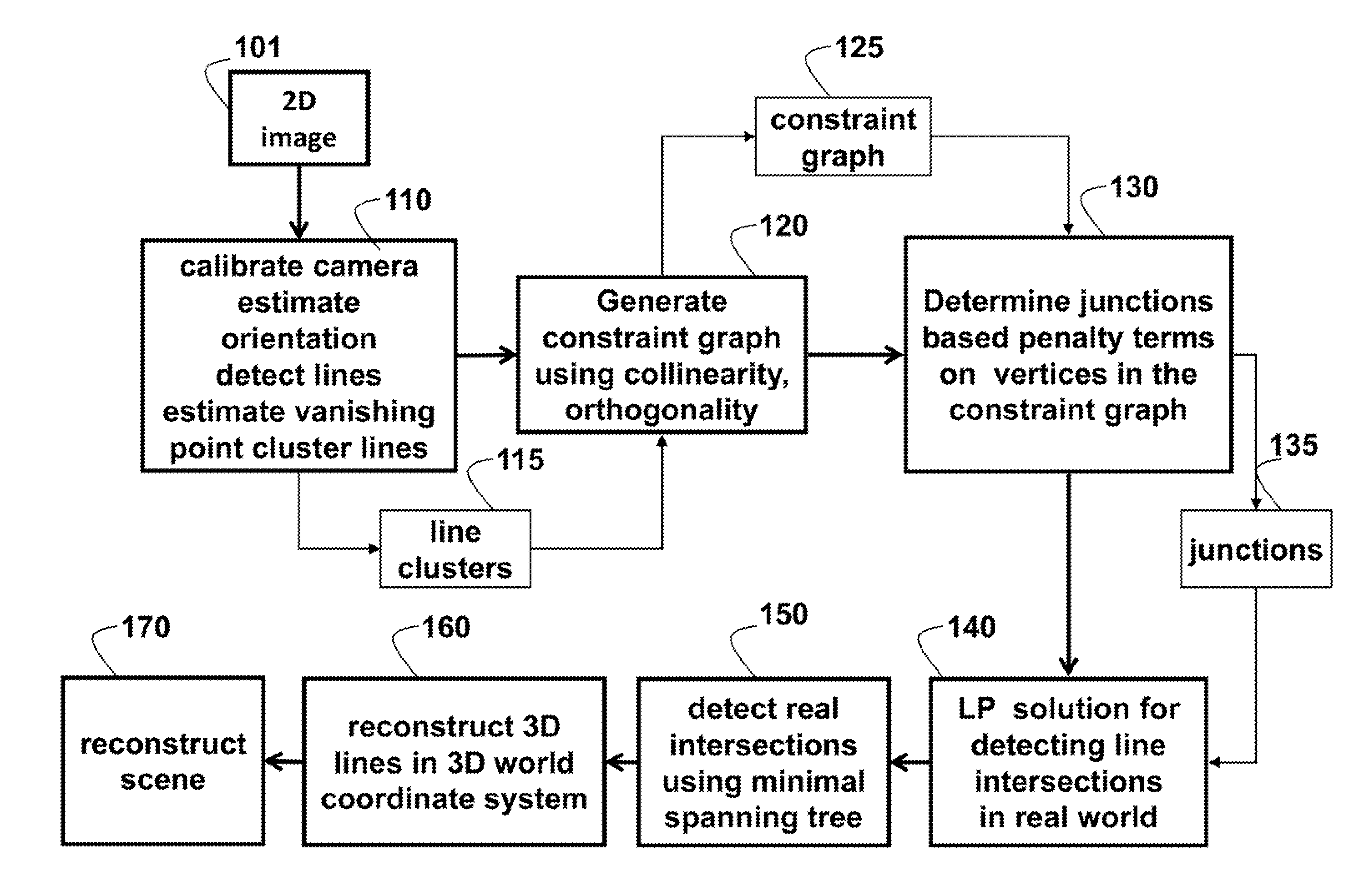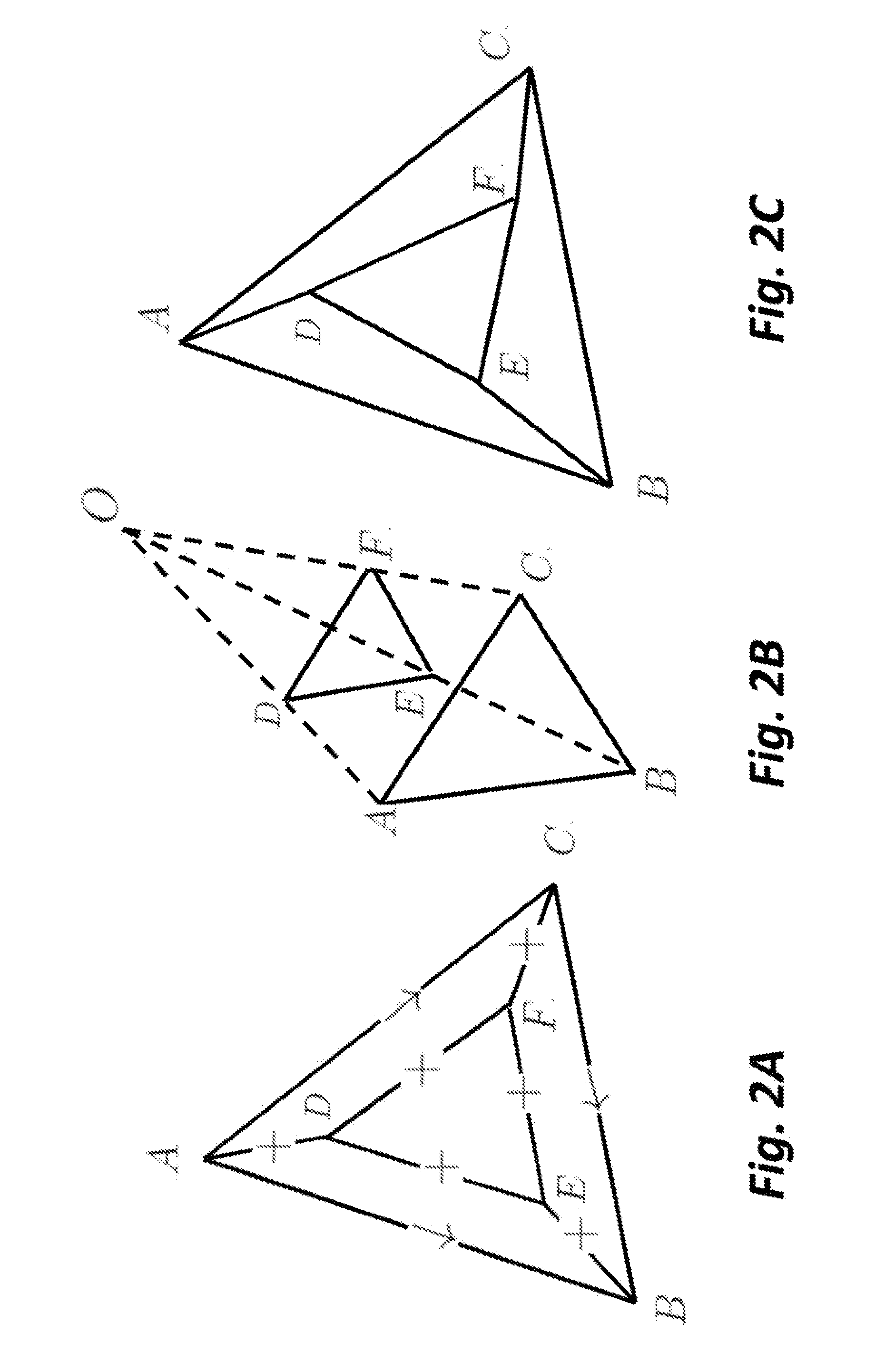Method for Reconstructing 3D Lines from 2D Lines in an Image
a 3d line and image technology, applied in image analysis, instruments, computing, etc., can solve the problems of occluding edges, difficult identification of apparent intersections in images with real world intersections, and single view reconstruction in computer vision
- Summary
- Abstract
- Description
- Claims
- Application Information
AI Technical Summary
Benefits of technology
Problems solved by technology
Method used
Image
Examples
Embodiment Construction
[0021]The embodiments of our invention provide a method for reconstructing 3D lines in a 3D world coordinate system from 2D lines in a single image. The reconstructed lines can then be used to reconstruct a three-dimensional (3D) scene from the 2D image.
[0022]FIG. 1 shows the line extraction method. After camera calibration and estimating an orientation of the 2D image 101, lines are detected, vanishing points are estimated, and lines are clustered 110. From the line clusters 115, we generate 120 a constraint graph 125 using colinearity and orthogonality constraints. From the graph, we determine 130 junction 135 based penalty terms for vertices in the constraint graph.
[0023]Linear programming (LP) 140 and a minimal spanning tree 150 are used to reconstruct 160 the 3D lines in a 3D world coordinate system. The 3D lines can then be used to reconstruct 170 the scene.
[0024]These steps are now described in greater detail. The steps can be performed in a processor connected to memory and ...
PUM
 Login to View More
Login to View More Abstract
Description
Claims
Application Information
 Login to View More
Login to View More - R&D
- Intellectual Property
- Life Sciences
- Materials
- Tech Scout
- Unparalleled Data Quality
- Higher Quality Content
- 60% Fewer Hallucinations
Browse by: Latest US Patents, China's latest patents, Technical Efficacy Thesaurus, Application Domain, Technology Topic, Popular Technical Reports.
© 2025 PatSnap. All rights reserved.Legal|Privacy policy|Modern Slavery Act Transparency Statement|Sitemap|About US| Contact US: help@patsnap.com



